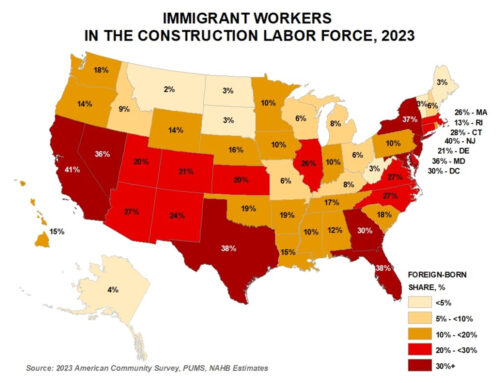Retention Attention
August 2, 2021
It is well-documented the construction industry, particularly the home and building market, is fraught with supply chain challenges and excuses. There are several implications to these challenges with the greatest being the loss of customers. We examine a few of the more obvious implications and a couple of the lesser ones. Our focus is on the need for customer retention attention.
Obvious Implications
The supply chain challenges most often cited include limited inventory, price increases, and shipping delays. A two-week cold snap in Texas crushed the petroleum industry and all the related products likes PVC and adhesives. Changes to forest harvesting by the Canadians exploded lumber pricing. Steel pricing is escalating with high demand and diminishing supply. We have also heard about truck delivery shortage, ship containers being held offshore, and mills and plants being closed due to the labor shortage associated with COVID. All of these are or have been seemingly legitimate reasons for the supply chain challenges. Add the low cost of money, claustrophobia associated with the pandemic lockdown, and a renewed desire to own a house and you have a classic demand versus supply scenario.
Less Obvious
There are a few less obvious implications to the supply chain challenge. Building products manufacturers are delaying new product development and introductions. The logic is “If we cannot fulfill our current orders, why introduce new products?” They are using this same line of reasoning to limit or stop investments in sales and marketing. Some manufacturers have decided to reduce or completely stop production. All of this is creating a new risk to their businesses as they are not able to provide their customers with the support they need. All this risk in the name of high demand and reduced supply. It is the best of times and the worst of times.
At Risk
We have experienced this type of marketplace before. We have seen this exact response by manufacturers before. The difference for us this time around is we have learned a thing or two as to how to work and prosper.
First, we must recognize the fact that builders will fulfill their product needs regardless of the brand or loyalty. They must protect their business. As soon as their current suppliers restrict the flow of products or inflict pricing changes that may compromise their business, builders begin to actively search for alternative suppliers. The last thing a builder wants is to have his contracts cancelled due to his inability to deliver a house in a timely fashion, on budget.
Next, building products manufacturers market share is vulnerable to competitors. For the all the reasons stated previously –
- Limited inventory
- Delayed shipments
- Price increases
Savvy competitors will begin to invite your customers to sample their products with promises of fulfilling their demand and meeting their pricing structure. If they fulfill these promises, you may have lost a builder customer for life. Your customers will move if you let them.
Pay Attention
It is relatively well-known that it is much less expensive to retain existing customers than it is to pursue and secure new ones. Knowing this and recognizing your competition is likely experiencing similar supply chain challenges, it is important to resist the impulse to simply take orders or ignore the obvious (and less obvious). Many or most manufacturers will do just this. There will be a few that pay attention to the builders and provide them with the customer service they are seeking.
The first thing a manufacturer must do is communicate, openly and freely. Not knowing is a cardinal sin which will lead to your customers leaving you for a supplier that is communicating with them, even if they share similar news. All channels of communications should be used including proactive phone calls, emails, and personal visits by the sales reps. These communications should provide updates on product availability, lead times, and price increases. There needs to be enough advanced notice for the customers to adjust their plans and commitments. Surprises break down trust and loyalty which leads to lost customers.
There is an opportunity to create strong bonds with your customers during these trying times. Working directly with them to understand their challenges and working with them to find solutions including alternative choices is an opportunity to build on your relationships. Use your companies’ resources to work together with your distribution and dealer network to support the builders. Short term solutions will produce long term commitments.
All your customers are likely being challenged at this time. Invite them to join an online community you host to share best practices, insights, and new resources to help them succeed. It feels lonely when you have pending demands, and no one is there to help. Use your marketing resources to help the builders communicate with their customers. Manufacturers have powerful communication tools the builders do not have that they can absolutely use. While your competition is going quiet because they cannot support any more business, you are using your resources to build, solve problems, build loyalty, and retain your business.
Riding the Momentum
In consumer retail, there is a practice known as “Maxing the Max.” The idea is it is easier to get a customer to spend an extra dollar while spending one hundred than it is to get them to spend one when they are spending nothing. Manufacturers work year round to get closer to their customers, inviting them to see and experience their latest products, services, and people. Now, when these same customers need you and are open to all your help, is the time deploy your resources and begin riding the momentum of this market. Don’t just take our word for it, see how Marvin Ellison, CEO of Lowe’s Home Improvement, is responding – click here!





